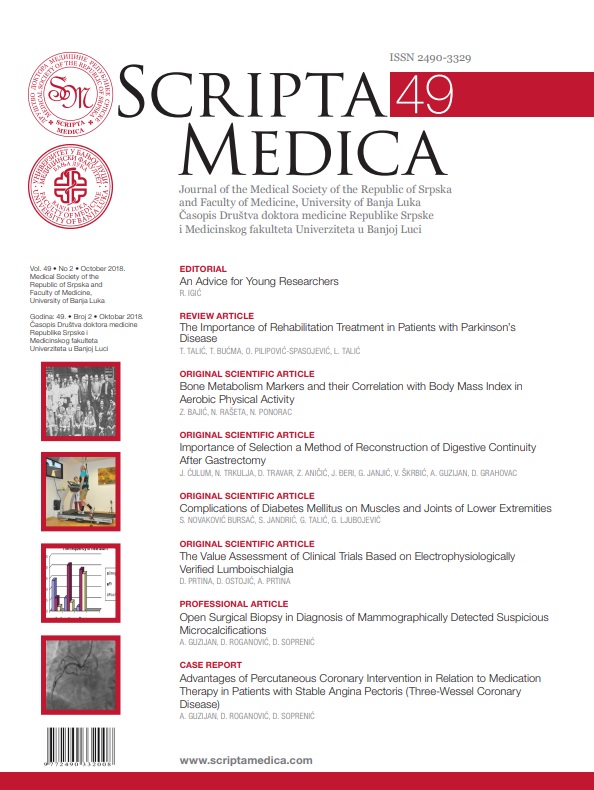Analysis of Survival at Metastatic Melanoma Patients Treated with Vemurafenib - a Three Year Single Institution Study
DOI:
https://doi.org/10.7251/SCMED1802126GAbstract
Introduction: The introduction of BRAF inhibitor vemurafenib significantly improved
overall survival (OS) in metastatic melanoma patients.
Aim of the Study: The purpose of this study was to determine OS and progression
free survival (PFS) in patients with advanced metastatic melanoma treated with
vemurafenib in the Oncology Clinic, University Clinical Centre of the Republic of
Srpska (UKC RS). The secondary goal is to determine the effect of elevated serum
lactate dehydrogenase (LDH) on OS.
Patients and Methods: We analysed patients that received vemurafenib in the
April 2015. until March 2018. They had pathohistologically confirmed B-RAF positive
metastatic melanoma. LDH values were measured at the start of the treatment.
Results: A total of 16 patients were analyzed, with an average age of 53 years
(37-78). A large number of patients at the start had multiple sites of metastases.
Calculated OS in patients who received vemurafenib is 11.8 months (p=0,23), with
standard deviation (SD) 9.18. The calculated PFS is 9.5, SD 7,57. OS in patients with
normal LDH is 14.4 months, SD 10.73, and with elevated LDH is 8.4 months, SD
4.9 (p=0.079).
Conclusion: Use of vemurafenib resulted in an improvement in PFS, with improved
OS in patients with advanced BRAF-mutated melanoma. In patients with elevated
LDH OS was reduced. This shows that LDH is a good prognostic marker and that
we should do it routinely for all patients with melanoma. This study has indicated
the need for new diagnostic and therapeutic options for melanoma in Republic of
Srpska.

